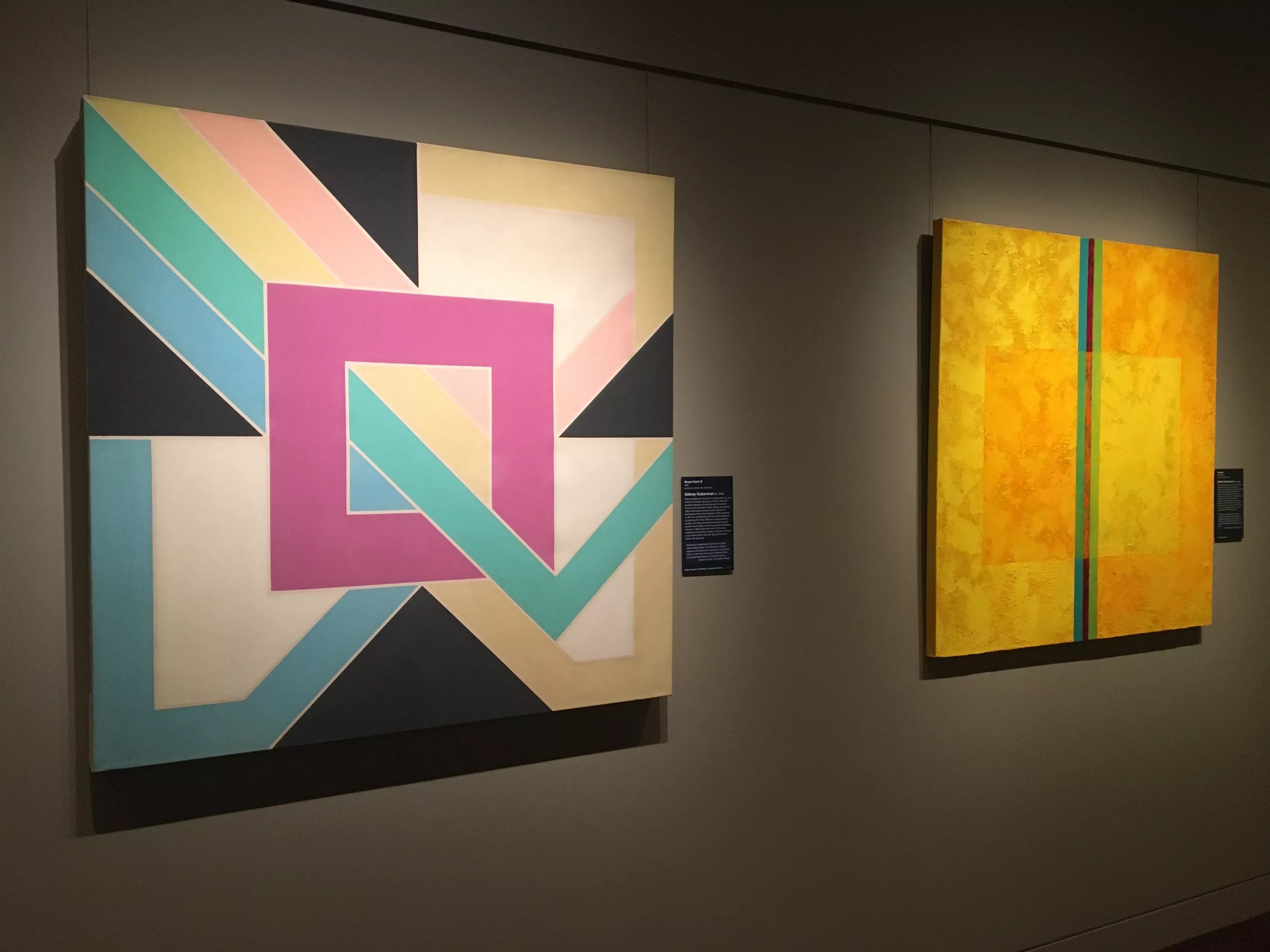
Photo by Robert Delaney

Audio By Carbonatix
Getting people in the door to take in visual art during the pandemic has been a challenge for many exhibition venues. To address that issue, the Kirkland Museum of Fine & Decorative Art has launched a series of shows with short runs to encourage people to return regularly.
Typically, collecting museums have only a small fraction of their holdings on view, and that’s particularly true for the Kirkland. Despite its relatively small size as compared to the neighboring Denver Art Museum and History Colorado, it has a collection of some 30,000 paintings, prints, sculptures, ceramics, furniture, decor and design items, and more. Every object has been personally assembled by Hugh Grant, whether he’s purchased it directly or simply vetted gifts and bequests that have come in. He selects only those works that align with his personal taste and his wide-ranging art interests, and the results are impressive.

Sidney Guberman
Photo by Robert Delaney
This makes Grant the singular creative force behind the institution’s direction. But for the upcoming season, he’s decided to hand off the organization of the shows to Kirkland deputy curator Christopher Herron instead of doing it himself, as he has through most of the Kirkland’s history. The idea was to change things up in the schedule, and after determining that each exhibit would run for just seven weeks instead of the usual several months, it was left to Herron to determine the themes of the shows and to select the pieces included in each. In order to orchestrate all five outings, Herron enlisted the help of collection and research manager Becca Goodrum.
Will you step up to support Westword this year?
At Westword, we’re small and scrappy — and we make the most of every dollar from our supporters. Right now, we’re $23,250 away from reaching our December 31 goal of $50,000. If you’ve ever learned something new, stayed informed, or felt more connected because of Westword, now’s the time to give back.
The first of these shows, which just opened, is New Year/New View, and it has an unwieldy theme. Rather than using some style, topic or particular medium to structure the exhibit, Herron has forged hidden bonds among the pieces to build its scaffolding. First, Herron and Goodrum chose works exclusively by artists associated in some way with Colorado. Beyond that, they included only pieces that had never before been exhibited at the Kirkland.

Photo by Robert Delaney
Dominated by paintings, the resulting show is wide open aesthetically. There are regionalist landscapes like the marvelous Boardman Robinson at one end of the spectrum, and conceptual realism, as exemplified by the quirky Jeff Starr at the other. There are various shades of abstraction, ranging from the expressionist, as in the intriguing Homare Ikeda, to the hard-edged, as with the sophisticated Sidney Guberman, as well as conceptual work, represented by the strong Bruce Price. Don’t miss the cubo-regionalist Mary Chenoweth from the earliest period of her artistic development.
The show also includes some choice ceramics. There’s a huge punch bowl by Nan and Jim McKinnell, a thrown and heavily altered vessel in a greenish Japanesque glaze. Nearby is a world-class Paul Soldner vase likely created in the 1960s, just as he was developing his influential signature look. Taking a completely different approach to using clay is Denver artist Maynard Tischler, with his large and precisely executed model of a Russian tank.

Maynard Tischler
Photo by Robert Delaney
Bev Rosen’s four abstractions are among the most interesting works. A key figure in the development of the contemporary art scene in Denver, Rosen became afflicted with Alzheimer’s disease in the ’90s. Nevertheless, she continued to create, and these accomplished pieces are among those she painted after her diagnosis.
The other four exhibits planned for the year are more tightly focused and tap different areas of the collection, not just unexhibited Colorado art. The next to go on view this coming spring is Truth, Beauty and Power: Christopher Dresser and the Aesthetic Movement, which zeroes in on proto-modern decorative art and its influence emanating from Britain in the last half of the nineteenth century.

Bev Rosen
Photo by Robert Delaney
Changing gears considerably is Material Oddities, set for summer. The show looks at how artists use various unexpected materials in works from across the collection. There will be a Frank Gehry cardboard chair to be set side by side with a paper dress with a Warholian soup-can motif printed on it. Colorado artists in the show include Pawel Kontny, who “painted” with diamond dust, and Ruth Todd, who used charred wood. There will even be examples of ceramics with glazes that are inadvertently radioactive.
It’s back to a focus on European decorative art in the fall, with Josef Hoffmann’s Vienna exploring the dawn of full-blown modernist design from the early twentieth century. Hoffmann was part of the Secessionist movement, which inspired later advancements in furniture and decor design. The exhibit includes things directly associated with Hoffmann and others in his circle. A centerpiece will be copies of the influential magazine Ver Sacrum, which championed the movement.
Finishing out the year is By the Yard: Textiles for the Home, which will be anchored by mostly never-before-exhibited material, with an emphasis on textiles, including fragile table linens and rugs that take up too much wall space to be displayed regularly.
The current offering, New Year/New View, is worth checking out, if only for the inherent joy that comes from seeing wonderful works that have been languishing in storage. The show runs through March 14 at the Kirkland, 1201 Bannock Street.
Associate director Renée Albiston notes that the Kirkland is a safe place to be during the pandemic, since the expansive space makes social distancing easy. The museum has limited capacity; visitors must have appointments and will only be allowed in every fifteen minutes; masks are required for all. For more information and tickets, go to the Kirkland Museum website.